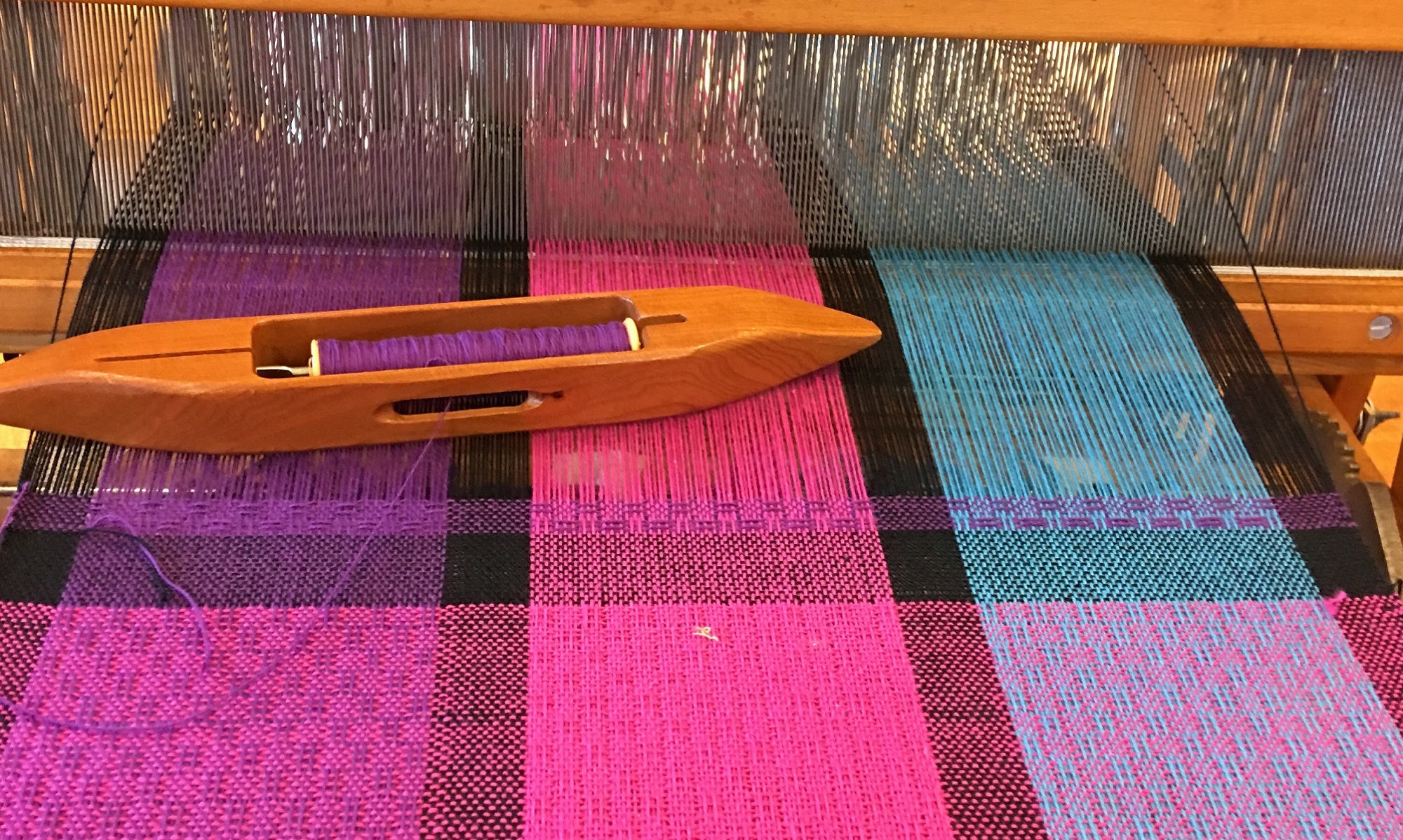I’m getting ready to wind my warp for a workshop I am taking at the Weavers Guild of Greater Cincinnati. Nationally renown weaver Rosalie Neilson (of rep weave fame) is conducting a workshop on block design and color with huck lace at the Guild house and it starts next week. First I had to get my vintage but new-to-me 4 shaft, 4 treadle, 22″ Harrisville Designs loom ready for the workshop. I wanted to use it rather than my Dorothy loom table loom since it has treadles. The HD loom was a freebie from a neighbor of a friend who was cleaning out her basement. I was so excited to get it because I really like my bigger HD loom. The “new” loom needed shaft cables and tie up cords replaced along with a good cleaning. I also rearranged the direct tie up from 1, 2, 3, 4 on the treadles to 1, 3, 4, 2 so that I can “walk” the treadles while weaving.
I finished up the restoration yesterday and started to prepare my warp today. I had to choose 4 colors, one is for a border to separate the blocks and the other three are the colors for the blocks. We were instructed to make a wrap of our warp colors to see how they all went together. Making a wrap is a common part of design in weaving. I dithered a lot and finally settled on the colors I had originally been drawn to and wrapped them up. They are a bit bold aren’t they? Now to wind the warp!




















